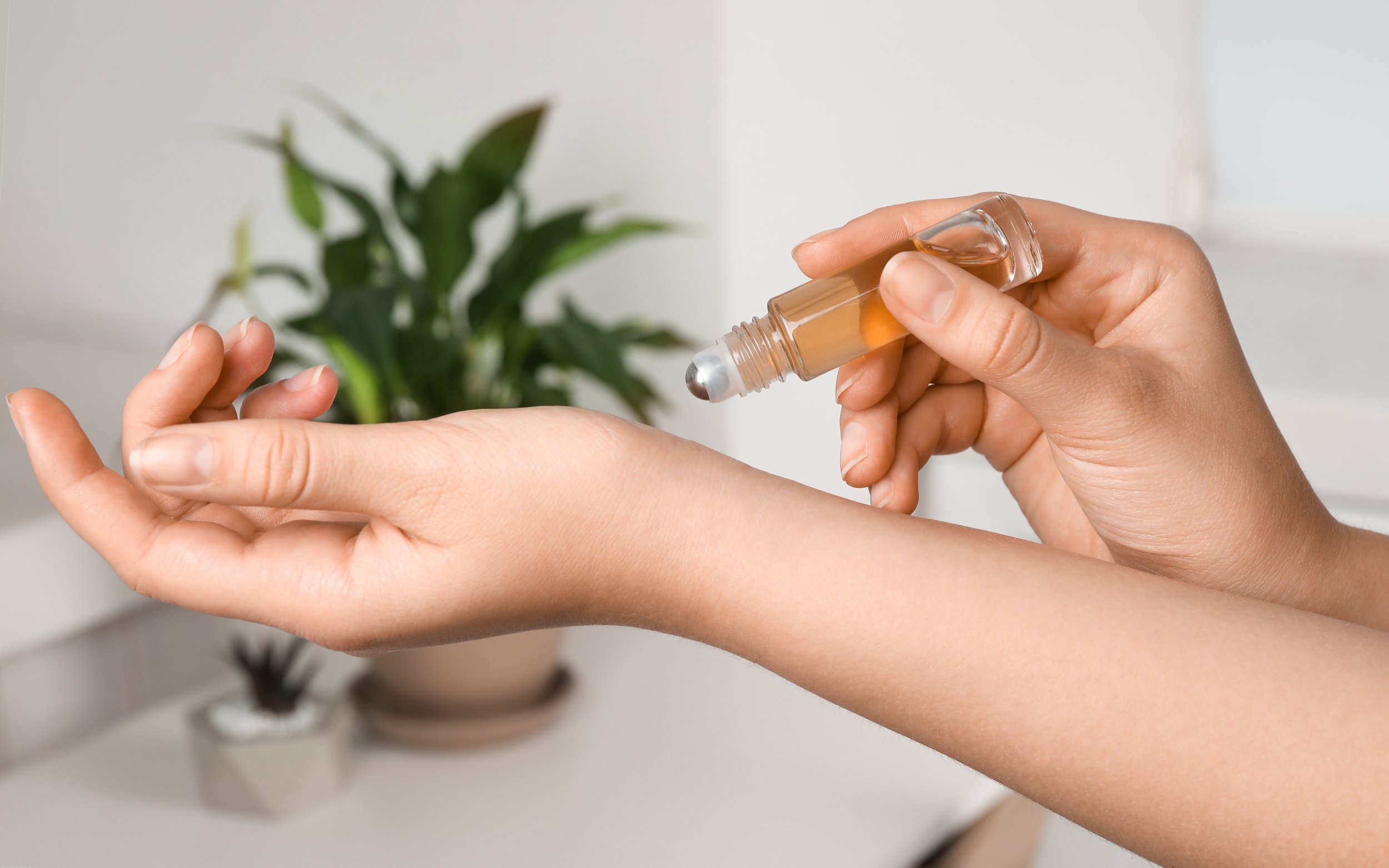Where to Apply Essential Oils: A Comprehensive Guide
Essential oils have gained popularity for their numerous therapeutic and aromatic benefits. These concentrated plant extracts offer a natural way to enhance well-being, from promoting relaxation to aiding in various health concerns. But do you know where to apply essential oils for maximum effectiveness? Proper application and usage can make a significant difference in their impact. In this guide, we'll explore the best places to apply essential oils for various purposes.
Before Using Essential Oils:
1. Research Thoroughly: Learn about each essential oil's properties, benefits, and safety considerations before using them. Check out my blog for more valuable information including 10 Things I Wish I Would Have Known When I First Started Using Essential Oils!
2. Quality Matters: Opt for high-quality, pure essential oils from reputable sources to ensure efficacy and safety.
3. Patch Test: Always perform a patch test to check for any adverse reactions or allergies before using an essential oil on your skin. This is especially important if you tend to have sensitive skin.
Here's how to do a patch test:
Select the essential oil you want to test. It's recommended to start with a single oil rather than a blend, as this helps you pinpoint any potential sensitivities. Some essential oils are more likely to cause skin sensitization so be mindful when using citrus oils, clove, and cinnamon.
Select a small area of the skin to conduct the patch test. The inside of your wrist, forearm, or behind the ear are commonly used spots.
Dilute the essential oil before applying it to your skin. Mix one or two drops of the essential oil with a carrier oil like coconut oil, jojoba oil, or almond oil. This helps prevent potential irritation from using undiluted essential oil.
Make sure the patch test area is clean and dry before applying the diluted essential oil. Gently apply a small amount of the diluted essential oil to the patch test area. Use a cotton swab or your fingertip for this purpose.
Allow the oil to sit on your skin for at least 24 hours. During this time, avoid washing the area.
After 24 hours, examine the patch test area for any signs of redness, itching, swelling, or irritation. If you notice any adverse reactions, discontinue use immediately. If you experience no negative reactions during the 24-hour period, it's likely safe to use the tested essential oil in your skincare or aromatherapy routine.
4. Dilution is Key: Most essential oils need to be diluted before applying to the skin. Follow recommended dilution ratios to prevent irritation. Get my free dilution guide here.
5. Carrier Oils: A carrier oil is known as a fixed or base oil that is a vegetable, nut or seed oil that is used to dilute the essential oil and “carry” it through the skin into the body. Carrier oils do not lessen the therapeutic benefits of essential oils; instead, they spread essential oils farther on the skin and actually help the body absorb the essential oils faster. Essential oils are highly volatile and evaporate quickly. Carrier oils are heavier and do not evaporate; instead, they fully absorb into the skin. In addition, they have their own beneficial properties and are a good source of vitamins such as A, D, and E as well as fatty scores needed by the skin to maintain tone and elasticity. Use carrier oils (e.g., coconut, jojoba, almond) to dilute essential oils and enhance their absorption into the skin.
6. Storage: Store essential oils in dark glass bottles, away from direct sunlight and heat, to preserve their potency and chemical properties.
7. Avoid Eyes and Mucous Membranes: Keep essential oils away from your eyes, ears, and sensitive areas. If accidental contact occurs, apply a carrier oil, not water.
8. Choose sun safe essential oils when applying to the skin: Some essential oils are photosensitive. Photosensitization is a reaction to a substance applied to the skin that occurs in the presence of UV light. Reactions can be skin irritations, discoloration, redness, rash, or burn. Essential oils high in furanocoumarins can cause this reaction such as most citrus oils like bergamot, lemon, lime and grapefruit. Be mindful of blends also containing these essential oils and when in doubt always check the labeled safety recommendations.
9. Less is More: Start with fewer drops of essential oil and add more if needed; a little goes a long way. It is important to remember that essential oils are extremely potent and it takes a great deal of plant matter to make one bottle. Less is more! If experiencing a skin irritation, sensitivity or adverse reaction, dilute further with carrier oil or discontinue use completely.
10. Rotate Oils: To prevent sensitization, switch up the essential oils you use in your blends and routines.
Where to apply essential oils topically
Applying essential oils directly to the skin is one of the most common and effective methods. In general, you want to apply essential oils topically where you are seeking localized support. (Ex: head tension, apply on temples or base of neck) If using for emotional support, apply a roller where you can smell the aroma like your neck or shoulders. Remember that the fastest way to the emotional part of our brain is through our sense of smell.
What about the feet?
Some argue that the bottom of the feet are the best place to apply essential oils. While the feet are a great option because they are less sensitive, they do not absorb essential oils as well as areas with thinner epidermal layers that are rich in sabaceous glands, sweat glands and hair follicles. Examples of these areas include the face, back, neck, scalp and wrists. Some people prefer to apply essential oils over reflex points based on the vita flex reflex charts in reflexology.
Pulse Points
Pulse points are areas of the body where you can feel your pulse due to the underlying blood vessels. These points provide excellent absorption and diffusion of essential oils. They include:
Wrists: Apply your diluted essential oil blend to the wrists and gently rub them together. This area allows for easy diffusion and ongoing aroma.
Temples: Applying essential oils to your temples can help relieve stress and tension. It's especially useful for headaches and promoting relaxation.
Behind the Ears: The area behind the ears is another effective spot for applying essential oils. It's close to pulse points and ensures a long-lasting fragrance.
Chakras
Some people prefer to apply essential oils to chakras. Chakras are energy centers or focal points within the human body that are often associated with various aspects of physical, mental, emotional, and spiritual well-being. The concept of chakras originates from ancient Indian traditions, particularly in Hinduism and Buddhism, and it is a fundamental part of yoga, meditation, and Ayurvedic medicine. The word "chakra" is Sanskrit for "wheel" or "circle," signifying their cyclical and continuous nature.
There are seven primary chakras, each located along the central axis of the body, from the base of the spine to the crown of the head. Each chakra is believed to correspond to specific physical, emotional, and spiritual qualities. Here's an overview of the seven main chakras:
Other Topical Applications
Essential oils can be incorporated into other topical applications:
Bath Soaks: As Hippocrates said “The way to health is to have an aromatic bath and scented massage every day.” Aromatic baths are one of the most popular ways to reduce stress and promote relaxation. Keep in mind that essential oils do not mix with water as they are hydrophobic. What this means is that you never want to add the essential oils directly to the bath without diluting the essential oils or using a proper dispersant. Enhance your bath by adding a few drops of essential oil to bath gel or carrier oil first before adding to the bath.
Massage: If you have access to a professional massage therapist, you can request essential oils to be used during your massage for a holistic and soothing experience. You can also add essential oils to carrier oil and give yourself a neck and shoulder massage.
Hair Care: Add essential oils to your shampoo or conditioner for a fragrant, invigorating shower experience. This method can also promote hair and scalp health.
Beauty Products: Some individuals blend essential oils with their skincare products. However, use caution when applying essential oils to your face, as facial skin is sensitive. Generally speaking, we want to use a 1% dilution when applying essential oils to the face.
By knowing where and how to apply essential oils topically, you can harness their therapeutic potential for various purposes, from relaxation to targeted relief. Keep in mind that individual responses to essential oils can vary, so experiment to find the best applications that work for you. If you're new to essential oils or have specific health concerns, consult an aromatherapist or healthcare professional for personalized guidance and recommendations.
Want to learn more about using essential oils? Check out my latest book Science of Essentials: The Essential Guide for Using Aromatherapy to Promote Health and Healing here.
Looking for more education on using essential oils? See my blog article, Ten Things I Wish I Would Have Known When I First Started Using Essential Oils.
Disclaimer: This blog is for general informational purposes only and does not constitute the practice of medicine, nursing or other professional health care services, including the giving of medical advice. The use of information on this blog or materials linked from this blog is at the user's own risk. The content of this blog is not intended to be a substitute for professional medical advice, diagnosis, or treatment. Users should not disregard, or delay in obtaining, medical advice for any medical condition they may have, and should seek the assistance of their health care professionals for any such conditions.





